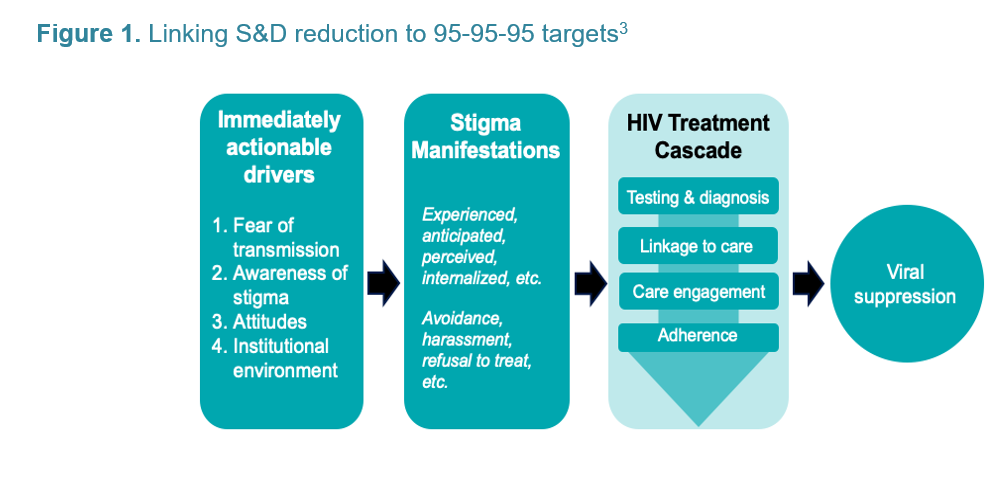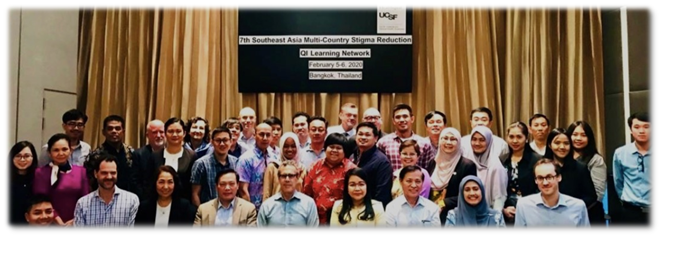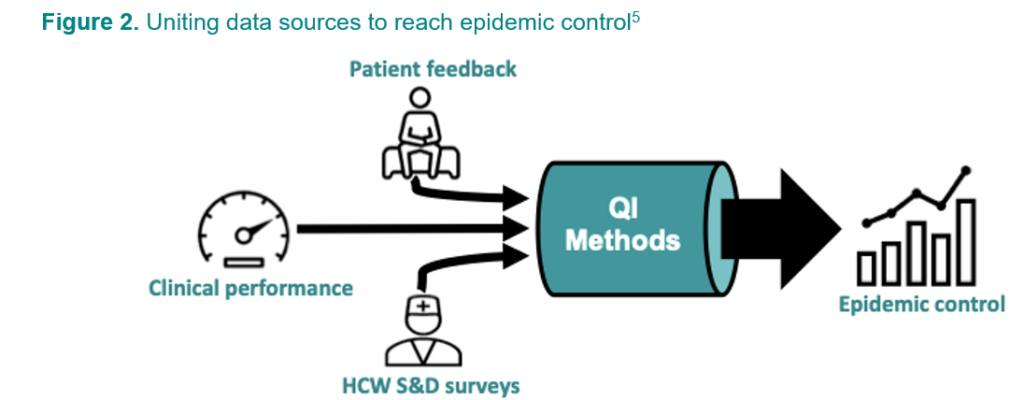Reducing HIV-related stigma and discrimination in healthcare settings through peer learning and application of quality improvement (QI) methods
What is the problem?
HIV-related stigma and discrimination (S&D) in healthcare settings is a major barrier to achievement of UNAIDS’ 95-95-95 targets, discouraging people living with HIV (PLWH) and key populations (KP) at high risk of HIV acquisition from accessing treatment and prevention, engaging in care, and adhering to treatment. In the Philippines, where the HIV epidemic is highly concentrated among KPs of men who have sex with men, sex workers, transgender people, and people who inject drugs, HIV-related S&D is further compounded by cultural, social, and institutional factors that discourage care seeking, undermine treatment self-efficacy, and normalize marginalization1.
A study made in 20162 demonstrated the presence of HIV-related stigma at a Philippine tertiary-level teaching hospital. The study recommended the development and implementation of programs addressing the individual, environmental, and policy levels to reduce HIV-related stigma of healthcare workers towards KPs & PLHIV and have a lasting impact on their healthcare. The responsibility of addressing S&D experienced by PLHIVs in hospitals lies with institutional leadership to ensure that HCWs are not purveyors of stigma and discrimination among PLHIV, and instead, are stewards of the safe space that healthcare should provide. For this to happen, assessment should be done at an institution level, and quality improvement (QI) measures established and promulgated. Mitigating S+D is critical to creating environments that enable health care institutions to reach these KPs and ensure that they receive HIV prevention and treatment services that are responsive to their unique identities, needs, and circumstances.

What is the solution?
In 2016, The Southeast Asia Stigma Reduction QI Learning Network (QI S+D) was set up by the University of California San Francisco (UCSF)-HEALTHQUAL, with support from Gilead Sciences and ViiV Healthcare to accelerate integration of S&D-reduction activities into routine HIV quality management programming in Cambodia, Lao PDR, Thailand, and Vietnam, through continuous measurement, QI methods, and peer-to-peer learning and knowledge exchange4.

In 2019, the Philippines joined the Network. The national QI S+D initiative is led by the Philippine Society of Microbiology & Infectious Disease (PSMID), Sustained Health Initiatives of the Philippines (SHIP), Inc., and UNAIDS Philippines, in partnership with public and private hospitals.
| PARTICIPATING HOSPITALS (as of December 30, 2020) |
| Bataan General Hospital (Bataan Haven) |
| Jose B. Lingad Memorial Regional Hospital (Bahay Lingad) |
| Bicol Regional Training & Teaching Hospital |
| Makati Medical Center (Center for Travel & Tropical Medicine) |
| Philippine General Hospital (Sagip Clinic) |
| Research Institute for Tropical Medicine |
| San Lazaro Hospital |
| St. Luke’s Medical Center – BGC |
| The Medical City (i-REACT Clinic) |
| Corazon Locsin Montelibano Memorial Regional Hospital |
| Cebu Provincial Hospital (Balamban) |
| Vicente Sotto Sr. Medical Center |
| Southern Philippines Medical Center |
Continuous measurement
As part of activities of the Philippine Network, participating hospitals will measure HIV-related S&D among healthcare workers (HCW) on a continuous basis using common indicators from a validated survey tool. In addition, these facilities will regularly collect data on patients’ experience and treatment literacy through structured questionnaires, patient fora, and clinical encounters.
QI methods
Using data from HCW surveys, patient feedback, and clinical performance data, facilities apply QI methods (e.g., process mapping, plan-do-study-act cycles) to identify root causes of suboptimal outcomes and implement contextually tailored interventions to improve identified gaps. Through this process, a broader conceptualization of quality of care is forged in which S&D reduction activities and people-centered service delivery are explicitly aligned with 95-95-95 targets (Figure 2).

How does this project work?
The Philippine QI S+D Network project seeks to accelerate progress toward achievement of UNAIDS’ 95-95-95 targets in the Philippines, by linking S&D reduction activities to routine quality improvement activities in healthcare facilities.
The Philippine project objectives are to:
- Develop & implement a multi-level measurement tool to determine the challenges in providing high-quality care for PLHIV in healthcare facilities in the Philippines, including issues such as stigma and discrimination
- Make use of data collected from the tool for improving services to provide high quality care that includes reducing stigma & discrimination
- Create health policy/guidelines to address challenges of providing equitable health care for PLHIVs, while improving their health care experience and increase treatment adherence
- Lobby for the adoption of the HIV Quality Improvement measurement tool into the nationwide HIV prevention, treatment, care, and support programs in all health facilities.
SHIP will conduct institutional S&D baseline assessments, and over the next 12 months, UCSF-HEALTHQUAL, SHIP and other implementation partners will provideongoing mentorship and support to the teams in participating hospitals, Our long-term aim is expand the Network to other hospitals & health facilities, and integration into national HIV program.
Progress and Impact
Implementation progress across participating countries, including the Philippines, is monitored by UCSF-HEALTHQUAL and shared with at the multi-country Network Meetings. Monitoring focuses on five broad domains: planning and organization, performance measurement, quality improvement, training, coaching and support. Leveraging its expertise in HIV quality management programming, UCSF-HEALTHQUAL provides technical assistance to health ministries & facilities seeking mentorship on implementation of Network activities. Activities to assess patient experience and treatment literacy through common indicators are currently being implemented, with the goal of routinely monitoring, and acting upon, these data as part of ongoing S&D reduction activities.
References
- UNAIDS. Confronting discrimination: overcoming HIV-related stigma and discrimination in healthcare settings and beyond. 2017.
- Lopez, S., et al. Measuring stigma and discrimination towards people living with HIV among health workers in a tertiary, government teaching hospital in the Philippines. Acta Medica Philippina. 2017:51(4)
- Courtesy of Laura Nyblade, RTI International
- Ikeda, D. et.al., A quality improvement approach to the reduction of HIV-related stigma and discrimination in healthcare settings. BMJ Global Health. 2019; 4(3): e001587.
- Courtesy of UCSF-HEALTHQUAL

